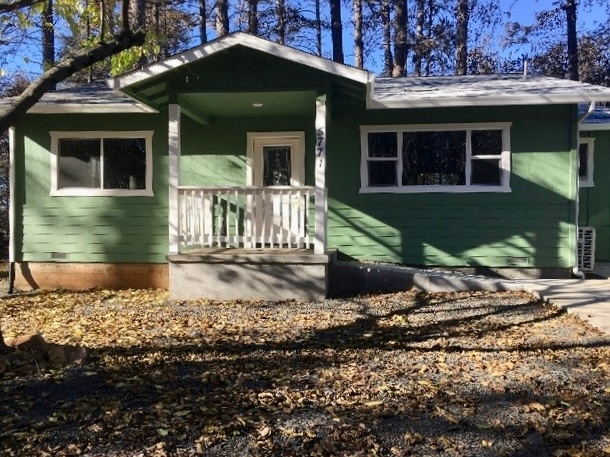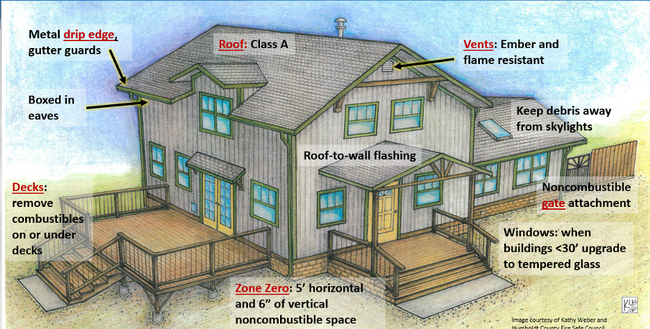How can we navigate changes in the home insurance market?
A wildfire shockwave recently hit California. Maybe you missed it. While there were no large wildfires threatening homes, and the air wasn't thick with smoke like in the Northeast from the wildfires in Canada, a shockwave did hit.
State Farm, California's largest home insurance company, issued an emergency declaration. As I write this, I note that my homeowner's policy is with State Farm, and while this may not affect me today, it could affect me when I choose to sell my home or buy a new one.
State Farm announced they will stop issuing new home insurance policies. Allstate issued a similar policy last year. These actions, in essence, shrink the available pool of insurers in California and are a very troubling sign for all of us. Furthermore, this action may significantly lengthen the time it takes to sell or buy a home in California or may affect our long-term ability to sell in the future and capture the financial values we have in our properties.
The loss of over 43,000 structures to wildfire over the last 10 years has not gone unnoticed by the insurance industry. Increasing fire hazards and skyrocketing costs to rebuild has everyone on notice that business-as-usual is not working.
California's policymakers and the Insurance Commissioner have their hands full with structuring the insurance market, creating a market that manages risk and attracts a diversified pool of insurance carriers, stabilizing insurance availability and affordability, and supporting the real estate sector of California's economy.
As a member of the state's Risk Modeling Workgroup, I can tell you that many approaches are being debated to address our challenges, including 1) allowing reinsurance calculations to be a part of insurance rates, 2) finding other ways to fund the Fair Plan (California's insurance plan of last resort), and 3) allowing catastrophe models to forecast risk in order to better anticipate future losses. With the passage of Proposition 103 in 1988, rate setting has been driven by past claims experience. Most suggest that future losses are likely to be significantly worse than past losses.
On July 13, the California Insurance Commissioner will hold a public hearing on whether rates should utilize catastrophe models that can account for anticipated climate changes and risk mitigation actions taken by property owners. Further, the state's Risk Modeling Workgroup will issue a report on this topic later this summer.
While these approaches are nuanced and complicated to understand, there are many actions that property owners can take to protect the value of their properties and mitigate risks.
Given this period of insurance instability, the best action property owners can take is to understand and mitigate wildfire risks. Reducing fuels, improving defensible space, and hardening the exterior of their structures to heat, flame and ember exposures will help to entice insurance companies to underwrite your property, enhance the ability to sell the property, and improve the odds of the building surviving future wildfires. By marketing the value of these actions, just like the remodeled kitchen or other property upgrades that attract homebuyers, you can market your asset to future insurance companies and buyers. Proactive actions, like upgrading vents, are a key part of the solution.
AB 38 (2019) started this process by mandating that the seller of a property disclose to the future buyer defensible space actions that have occurred for properties in Very High and High Fire Hazard Severity Zones. In 2025, these disclosures need to include home hardening actions based on an established low-cost retrofit list. Over time, these actions are likely going to become key for the negotiation of price and potentially the closure of the sale.
Independent assessment of preventive actions may also be helpful. The Safer From Wildfires program was established in 2023 to help promote insurance discounts for the voluntary adoption of wildfire mitigation actions; in my opinion, it could be used as an insurability assessment as well. Another option is to consider the Insurance Institute for Business and Home Safety's Wildfire Prepared Home designation. Helping your community think through the issues and take collective action to meet a Firewise designation is another approach to consider.
More information about home hardening and defensible space can be found at UC Cooperative Extension's Fire website. And if you need help navigating a recent insurance cancellation, United Policyholders, a consumer rights advocacy organization, has helpful resources.
Wildfire adaptation will not occur overnight, but I believe we have a pathway and clear evidence to demonstrate that these types of specific actions will help all of us live successfully with wildfire in California now and into the future.






Posted by Marlene on June 22, 2023 at 7:16 AM